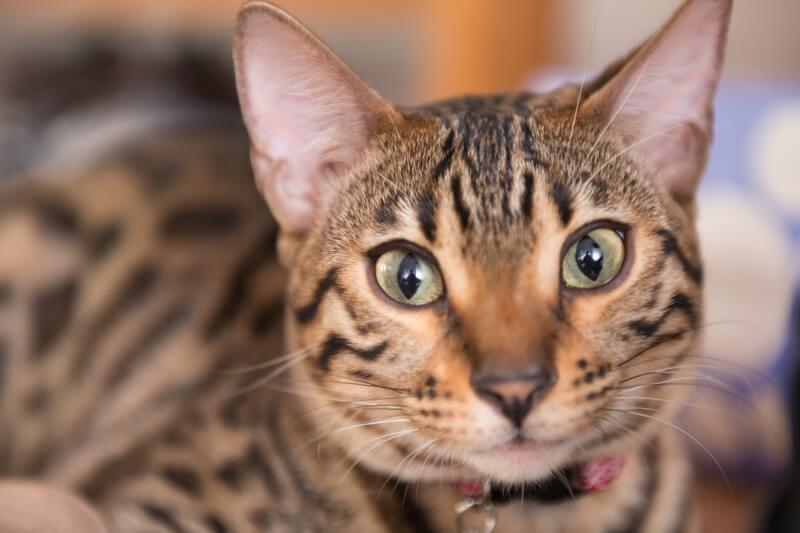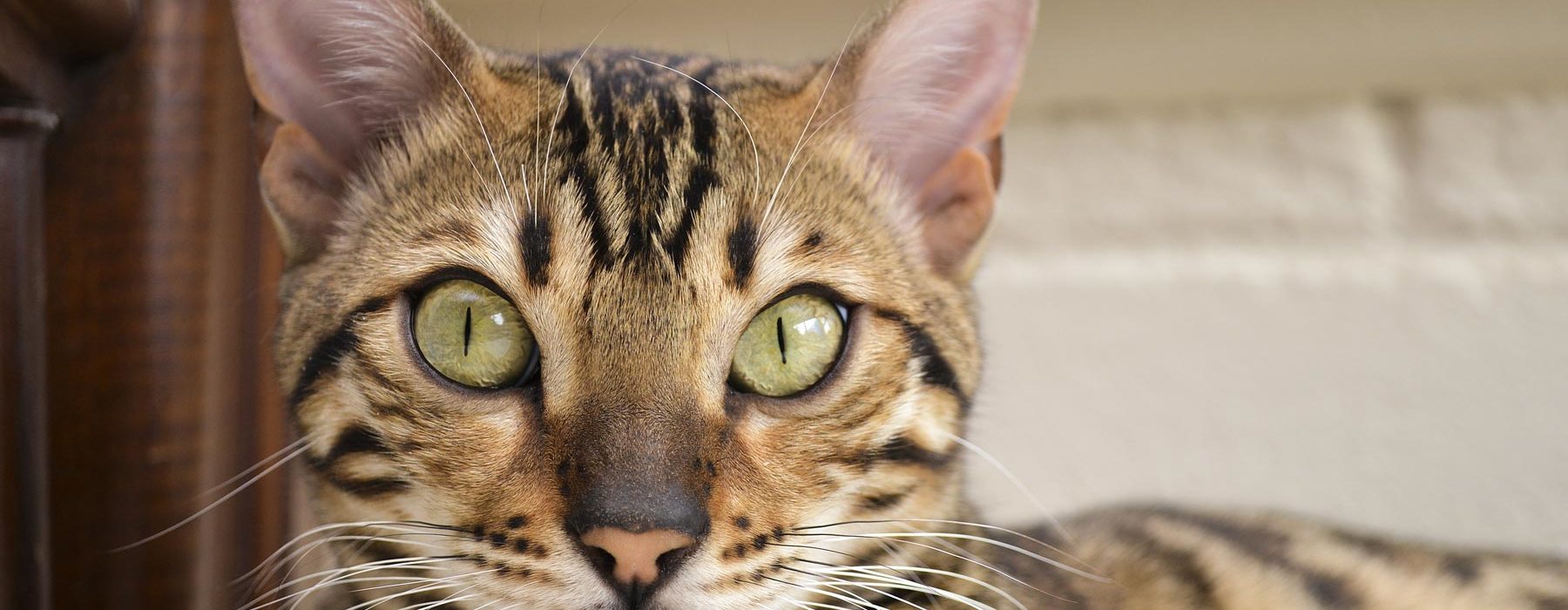Table of Contents Show
Bengal cats can suffer from heatstroke and dehydration during hot weather. Owners should ensure they have cool retreats and constant access to water.
As a distinct and active breed, Bengal cats are known for their luxurious, spotted coats and spirited playfulness. Originating from hybrid ancestors, these felines possess unique characteristics that often mirror their wild counterparts. As such, they thrive in environments that cater to their physical and mental needs, which includes careful attention to temperature regulation.
With their dense fur, Bengal cats may not always exhibit obvious signs of distress in the heat. It’s crucial to monitor their behavior and environment to prevent any heat-related health issues. Responsible pet ownership involves recognizing the signs of overheating and taking proactive measures to maintain a comfortable and safe climate for these energetic creatures. Keep your Bengal cat healthy and happy by being vigilant about their needs, especially during warmer seasons.
Understanding The Bengal Cat’s Susceptibility To Heat
Bengal cats dazzle with their wild appearance and energetic personality. Yet, these traits also hint at their unique needs, particularly regarding temperature regulation. Unlike other domestic cats, Bengals can be more sensitive to heat, with their well-being closely tied to the thermal environment. Caring for a Bengal means ensuring they stay cool and comfortable, especially during hot weather.
Physical Characteristics Contributing To Heat Sensitivity
Bengal cats boast a distinctive, short, and dense coat, marked with beautiful marbling or spots. This remarkable fur is more than just attractive; it reflects their genetic lineage back to the Asian leopard cat. Their coat, while sleek, is not as efficient as other breeds’ at dispelling heat.
- Limited sweat glands that are less effective in cooling
- Compact bodies can retain more heat
- Dense fur offers less ventilation
Bengals exhibit a muscular build, which generates more heat during activity. This heat accumulation requires sufficient cooling strategies to prevent overheating. Moreover, their love for play compels them to be active, often unaware of the risks of high temperatures.
The Significance Of A Bengal Cat’s Origin On Heat Tolerance
The roots of the Bengal breed trace back to warmer climates. Their ancestors, the Asian leopard cats, thrived in various environments. However, selective breeding has not only focused on their beautiful coats but also domestic comfort, possibly altering their natural heat tolerance.
| Ancestral Climate | Heat Adaptation |
|---|---|
| Warmth-loving | Good in the wild |
| Domesticated Bengals | Less adapted for heat |
This table shows how Bengal cats have shifted from their heat-adapted ancestors to potentially less tolerant domestic pets. Despite their heritage, modern Bengals might not have the same resilience to heat as their wild cousins. As a result, they depend on their owners to monitor and manage their exposure to warm temperatures.
The unique origin of Bengal cats contributes significantly to their present-day heat sensitivity. Understanding this aspect is crucial for ensuring their comfort and health. Regularly providing a cool, shaded, and ventilated environment will help in preventing heat-related stress in these beautiful and active felines.

Credit: www.aspcapetinsurance.com
Recognizing Heat-related Issues In Bengal Cats
Bengal cats are known for their striking coats and playful energy. But as with all cats, they are susceptible to heat-related issues, particularly during hot weather. Recognizing the signs of overheating and heat stroke in Bengal cats is crucial for their wellbeing. It ensures pet owners can act quickly to prevent long-term health consequences.
Symptoms Of Overheating And Heat Stroke
- Panting: Unlike dogs, cats rarely pant. Seeing a Bengal cat panting is a red flag.
- Restlessness: Your cat may seem unable to find a comfortable spot and keep shifting around.
- Bright red gums: Healthy cat gums are pink, red gums indicate overheating.
- Vomiting or diarrhea: These are serious symptoms that require immediate attention.
- Rapid heartbeat: This can escalate to severe conditions if not managed quickly.
- Weakness or lethargy: Bengal cats are typically active. Any change in energy is cause for concern.
Long-term Health Risks Associated With Heat Exposure
| Health Risk | Description |
|---|---|
| Organ damage: | Continued exposure to heat can damage kidneys, brain, and other organs. |
| Dehydration: | Long-term dehydration may lead to urinary problems and kidney stones. |
| Skin conditions: | Heat can cause dry skin, making your Bengal more prone to skin infections. |
| Respiratory issues: | Heat stress worsens conditions like asthma or can lead to lung inflammation. |
Immediate action is needed if a Bengal cat shows symptoms of overheating or heat stroke. Lowering their body temperature and seeking veterinary help are critical steps. Always provide ample water and a cool environment to keep your Bengal cat safe during hot seasons.
Essential Care Tips To Prevent Heat-related Issues
Bengal cats, with their sleek coats and wild appearance, captivate the hearts of many. Yet, these beautiful felines can face heat-related issues just like any other breed. Understanding essential care tips can keep these majestic creatures safe and cool, especially in warmer climates.
Optimizing The Home Environment For Cool Comfort
- Shade and Ventilation: Always provide shaded areas. Open windows for airflow, but ensure screens prevent escapes.
- Cooling Mats and Fans: Use cooling mats in your cat’s favorite spots. Position fans strategically around the home.
- AC and Humidity: Maintain a comfortable temperature with air conditioning. Use dehumidifiers to manage moisture levels.
Hydration And Nutrition: Key Factors In Heat Prevention
Proper hydration and nutrition are vital. Water bowls must be available at all times. Fresh, clean water encourages drinking.
| Hydration Tools | Benefits |
|---|---|
| Water Fountains | Entice more drinking with running water. |
| Ice Cubes | Add to water for a refreshing temperature. |
| Wet Food | Increases fluid intake, supporting hydration. |
The Importance Of Regular Veterinary Check-ups
- Wellness Checks: Schedule routine check-ups to monitor your Bengal’s health.
- Heat Stress Signs: Learn the signs. Vets can provide guidance on what to look for.
- Updated Vaccinations: Keep vaccinations up-to-date, especially during peak heat times.
Emergency Response To Heat-related Distress In Bengals
Bengal cats love warmth, but sometimes, they can get too much of it. In hot weather or during vigorous exercise, your Bengal may experience heat-related distress. Knowing how to respond quickly and appropriately can be the difference between a simple scare and a serious emergency. Let’s dive into the immediate steps pet owners should take if their Bengal shows signs of overheating and understand when it’s time to call the vet.
Immediate Actions To Take During Overheating
When a Bengal cat shows signs of overheating, act fast with these steps:
- Move your Bengal to a cool area: This might be a room with air conditioning or a shaded spot.
- Offer fresh water: Encourage your cat to drink without forcing it.
- Wet your cat’s fur: Use cool (not cold) water to gently moisten the cat’s fur. Avoid the face.
- Use a fan: A gentle breeze can help lower your Bengal’s body temperature.
- Check for signs of cooling: Look for less panting and a more relaxed demeanor.
When To Seek Veterinary Assistance
Your Bengal’s health could be at risk if you notice:
| Sign | Action |
|---|---|
| Persistent panting | Call your vet immediately. |
| Weakness or confusion | These are urgent signs. Seek help. |
| Vomiting or seizures | These are severe symptoms. Rush to the vet. |
Remember, proactive steps can prevent heat stress. Keep your Bengal cat cool, hydrated, and happy even on the hottest days.
Lifestyle And Environmental Adjustments For Bengal Cats
Bengal cats thrive in environments that match their energetic and intelligent nature. Yet, their thick coats can make them vulnerable to heat-related issues. It is crucial to adjust their lifestyle and surroundings. This ensures they stay cool and comfortable during hot weather. Below are tips to make warm seasons safe for your Bengal.
Selecting Appropriate Accessories
- Cooling mats: Provide a special mat to help your Bengal cat regulate its body temperature.
- Water bowls: Multiple bowls encourage hydration. Consider one with a fountain to attract your Bengal.
- Shade providers: Ensure spots with shade are accessible for your cat inside and outside.
Grooming Practices
Regular grooming offers more than a shiny coat. It prevents overheating. Use a brush suitable for Bengals to remove excess fur. This helps air circulate better through their coat. Plan grooming sessions either in the early morning or late evening. These times are cooler.
Training And Exercise Considerations In Hot Weather
Exercise is key to a Bengal’s health, yet extreme heat poses risks. Shift intense activities to cooler times, like early morning or late evening. Ensure playtime is fun but doesn’t overexert your cat. Use indoor toys to keep them moving without the heat stress.
- Adjust playtime schedules according to the temperature
- Introduce fun indoor games
- Keep training sessions short and stimulating

Credit: thebengalconnection.com

Credit: www.amazon.com
Frequently Asked Questions Of Bengal Cat Heat-related Issues
How Do Bengal Cats Show They’re In Heat?
Bengal cats exhibit signs like increased vocalization, affectionateness, and a tendency to assume mating postures. Restlessness and excessive grooming, especially around the genital area, are also common signs when they are in heat.
What Risks Does Heat Pose To Bengal Cats?
Heat cycles in Bengal cats can lead to stress and vulnerability to infections. Prolonged heat without mating can cause medical issues like pyometra or mammary gland diseases. It’s important to manage their breeding cycles carefully.
Can Bengal Cats Experience Heat Distress?
Yes, Bengal cats can experience heat distress characterized by panting, agitation, and lethargy. During high temperatures, ensure they have access to cool areas, fresh water, and shade to prevent heatstroke and dehydration.
How To Care For A Bengal Cat During Heat?
Provide a calm environment and extra attention to help soothe a Bengal cat during heat. Using pheromone diffusers or seeking veterinary advice for safe and effective heat cycle management can also be beneficial.
Conclusion
Understanding Bengal cat heat-related issues is crucial for their well-being. Short, frequent monitoring can prevent most complications. Remember, a cool environment and hydration are key. Keep your feline friend safe from the heat; their health depends on it. Protecting them shows deep care and love for your unique, energetic companion.







